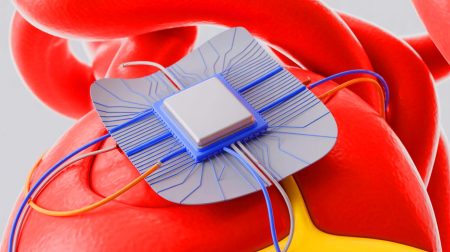| IN A NUTSHELL |
|
In the evolving landscape of renewable energy, solar power continues to stand out as a beacon of promise. Recent advancements in solar technology have unveiled a groundbreaking method to enhance the efficiency of silicon solar cells. By employing precision-engineered surfaces and novel antireflective coatings, scientists have made significant strides in minimizing energy loss and maximizing solar power generation. This development not only holds potential for a more sustainable energy future but also represents a leap forward in the application of nanotechnology in renewable resources.
Revolutionary Antireflective Coatings for Solar Cells
Recent research has highlighted the profound impact of antireflective coatings on the efficiency of solar cells. Almost half of the solar energy that reaches a silicon solar cell is typically lost due to reflection at the silicon–air interface. However, innovative antireflective coatings have been shown to suppress this reflection significantly, thereby increasing the photogenerated current. Published in Advanced Photonics Nexus, the study by SPIE-the International Society for Optics and Photonics, introduces a novel approach using a single, ultrathin layer of polycrystalline silicon nanostructures, also known as a metasurface. This breakthrough design, enhanced by artificial intelligence, manages to achieve minimal reflection across certain wavelengths and angles, marking a significant improvement over conventional coatings.
According to the study, the reflection averaged over the visible and near-infrared spectra is at a record-low level of approximately 2% for normal incidence and 4.4% for oblique incidence. These findings underscore the potential of machine learning-enhanced photonic nanostructures to outperform traditional antireflective coatings, paving the way for more efficient solar energy systems.
Efficiency at Steep Angles: A Game-Changer
The effectiveness of the new coating extends across the visible and near-infrared spectrum, ranging from 500 to 1200 nanometers. This coating remains effective even when sunlight hits at steep angles, reflecting as little as 2% of incoming light at direct angles and about 4.4% at oblique angles. Such unprecedented results for a single-layer design highlight the potential for these coatings to be integrated into mainstream solar panels, providing a substantial boost in efficiency.
This advancement not only represents a significant technological breakthrough but also has the potential to accelerate the transition to clean energy. The simplicity and high performance of this nanostructural layer could lead to widespread adoption, enhancing the efficiency of solar panels globally. Beyond solar energy, this approach also advances the design of metasurfaces for optics and photonics, opening doors to multifunctional photonic coatings that could benefit sensors and other optical devices.
Innovative Design Techniques: Forward and Inverse
The development of this metasurface was achieved by combining forward and inverse design techniques, both enhanced by AI. Forward design involves selecting specific geometric parameters to achieve the desired antireflection properties. In contrast, inverse design allows researchers to explore a broader range of geometries without pre-selecting a specific type, increasing the likelihood of finding a globally optimal solution.
The study reveals successful results with both forward-designed cross-circular and free-form inverse-designed structures, boasting the best-reported antireflection properties for single-layer structures. This dual approach demonstrates the versatility and potential of AI-enhanced design techniques in creating highly efficient solar technologies, potentially revolutionizing how solar panels are manufactured and utilized.
Implications for the Future of Solar Energy
The implications of this research extend far beyond the realm of solar energy. By demonstrating high functionality in reducing reflection with antireflective coatings on glass and other low-index substrates, these findings could revolutionize the design of a wide range of optical devices. This opens up possibilities for more efficient sensors and imaging technologies, further illustrating the broad applicability of these innovations.
This research underscores the transformative potential of nanotechnology and machine learning in advancing renewable energy technologies. As the world continues to seek sustainable energy solutions, these innovations represent a critical step forward. They not only promise to make solar power more efficient and accessible but also highlight the importance of interdisciplinary collaboration in tackling global energy challenges.
As we stand on the brink of a renewable energy revolution, one question remains: How will these technological advancements shape the future of our energy landscape, and what other innovations might emerge from this intersection of AI and nanotechnology?
Did you like it? 4.5/5 (26)










Wow, these new solar panels sound amazing! When can we expect them to hit the market? 🤔
How much will these ultra-efficient panels cost compared to current solar technology?
This sounds too good to be true. What’s the catch? 🤨
Finally, a real breakthrough! Thank you to all the scientists involved! 🙌
Can these panels be used in extreme weather conditions?
Will this technology be available for residential use, or is it just for commercial projects?
Sounds like we’re one step closer to a greener planet. 🌍
Is there any information on the lifespan of these new panels?
So excited to see this tech in action! When can we install it on our roofs? 😁
How does AI enhance the design of these solar panels?
Hope this isn’t just another hype. Prove us wrong, please! 😅
Are there any environmental risks associated with the production of these panels?
Can someone explain what metasurfaces are in simple terms?
Will this new tech work in cloudy or low-light conditions?
I’m curious about the maintenance requirements of these panels. 🤔
Could this lead to more affordable solar energy worldwide?
This could be a game-changer for rural areas with limited power access. 🌞
What are the energy efficiency improvements compared to traditional panels?
I hope this tech doesn’t end up being too expensive for the average consumer.
AI and solar panels? What a time to be alive! 🤖
Are there any government incentives for adopting this new technology?
It all sounds great, but when will we see real-world testing results?
Does this mean we can finally get rid of those ugly solar panels? 😂
Thank you for the detailed article! Can’t wait to see what comes next.
Are there any potential downsides to using nanolayers in solar panels?
What kind of impact could this have on the global energy market?
I’m optimistic, but we’ve seen promising tech fail before. 🤞
Could this technology be adapted for use in electric vehicles?
Innovations like this give me hope for the future! 🌟
Any word on how durable these panels are over time?
Hope this helps reduce reliance on fossil fuels! 🌿
Fascinating read! I’m interested in seeing how this evolves.
How soon can we expect to see the cost of solar energy drop? 💸
These advancements are truly impressive! Kudos to the researchers. 🎉
Do these panels require special installation techniques?
Sounds like science fiction, but it’s real! Amazing! 🚀